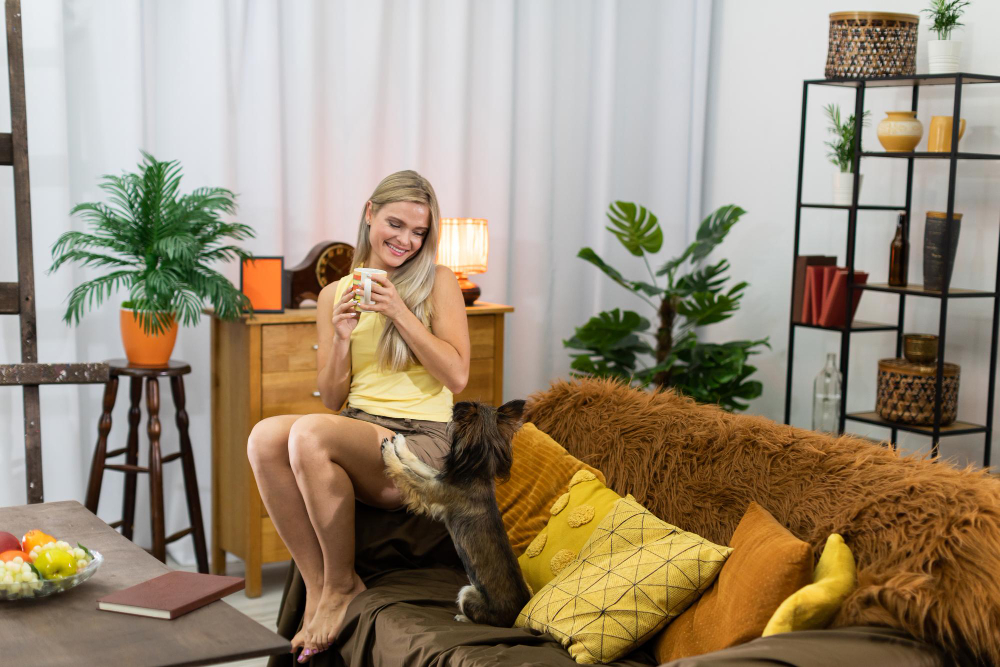

Finding the perfect apartment is challenging enough—add a furry, feathered, or scaled companion to the mix, and the search becomes even more complex. Many renters assume that having a pet automatically limits their housing options, but the reality is quite different. With proper preparation and a responsible approach, you and your pet can find a comfortable home that works for everyone involved.
Whether you're a first-time renter with a new puppy or a seasoned tenant looking to relocate with your longtime feline friend, understanding how to navigate the pet-friendly rental market will save you time, stress, and potentially thousands of dollars in deposits and fees.
Before you fall in love with a listing, take time to thoroughly understand the property's pet policy. Not all "pet-friendly" apartments are created equal. Some properties welcome cats but not dogs, while others have strict size or breed restrictions. Weight limits typically range from 25 to 75 pounds, and certain breeds may be prohibited due to insurance requirements rather than personal preference from landlords.
Pet deposits and fees vary significantly across properties. You might encounter a one-time pet deposit (usually refundable), monthly pet rent (typically $10-50 per month), or a non-refundable pet fee. Some properties charge all three, so factor these costs into your budget early in your search.
Documentation requirements have become increasingly common. Many landlords now request veterinary records, proof of current vaccinations, and sometimes even references from previous landlords. Having these documents ready will streamline your application process and demonstrate your commitment to responsible pet ownership.
The transition from house to apartment living—or from one apartment to another—can be stressful for pets. Start preparing your companion several weeks before the move. If your pet isn't already crate trained, begin this process early. A crate provides security during the moving process and helps establish boundaries in your new space.
Exercise routines become crucial in apartment living. Dogs need consistent physical activity regardless of your living situation, but apartment dwellers must be more intentional about meeting these needs. Research nearby dog parks, walking trails, and pet-friendly businesses before you move. Many apartment complexes now include on-site dog parks or agility courses, which can be a significant advantage.
Socialization takes on new importance when you're sharing walls with neighbors. Your pet will encounter more people, sounds, and smells in an apartment setting. Gradually expose your pet to various stimuli and work on basic commands like "quiet" and "stay" to ensure they're well-behaved in close quarters.
Maximizing your limited square footage while keeping your pet comfortable requires strategic planning. Designate specific areas for eating, sleeping, and playing. Cats benefit from vertical space—consider tall cat trees or wall-mounted shelves to give them territory without consuming floor space.
Storage solutions become essential when you're managing pet supplies in a small space. Invest in furniture that doubles as storage, such as ottomans that can hold toys and treats, or benches with built-in compartments for leashes and grooming supplies.
Safety considerations are paramount in apartments. Secure windows and balconies properly, especially for cats who might be tempted to explore. Many apartments have thin walls, so consider carpet or rugs to muffle the sound of pets running or playing, which will help maintain good relationships with neighbors.
Your relationship with property management and neighbors directly impacts your renting experience. Introduce yourself to the leasing office and let them know you're a responsible pet owner. Address any concerns proactively and maintain open communication if issues arise.
Neighbor relationships require extra attention when you have pets. A friendly introduction can go a long way toward preventing future conflicts. If your dog barks while you're away or your cat tends to be vocal at night, acknowledge these behaviors and explain what you're doing to address them.
Consider joining or creating a pet owners' group within your building or complex. This creates a support network and can lead to valuable services like pet-sitting exchanges or group dog walks.
Noise complaints are among the most frequent issues for pet owners in apartments. Address excessive barking or meowing immediately—these behaviors often stem from boredom, anxiety, or medical issues. Puzzle toys, background noise, and increased exercise can help reduce problem behaviors.
Damage prevention protects both your security deposit and your reputation as a tenant. Use furniture protectors, maintain your pet's nails, and address accidents immediately. Keep cleaning supplies specifically designed for pet messes readily available.
Emergency planning becomes more complex in apartment living. Know your building's evacuation procedures and have a plan for your pet. Keep a "go bag" with essential pet supplies, and identify pet-friendly hotels or friends who could temporarily house your companion if needed.
Research potential communities thoroughly before applying. Read online reviews from other pet owners, and pay attention to comments about pet policies, amenities, and management responsiveness. Drive through neighborhoods at different times of day to assess noise levels and observe how other residents interact with their pets.
During property tours, ask specific questions about pet amenities, nearby veterinary clinics, and any planned policy changes. Some complexes offer pet washing stations, dog runs, or even pet daycare services that can significantly improve your quality of life.
Location matters more when you have pets. Proximity to parks, pet stores, and veterinary clinics should factor into your decision. Consider your daily routine and how pet care responsibilities will fit into your commute and lifestyle.
A well-prepared pet resume can distinguish your application from others. Include your pet's basic information, vaccination records, training certifications, and references from previous landlords or neighbors. Professional photos of your well-groomed, well-behaved pet can also make a positive impression.
Consider offering a larger security deposit or additional pet deposit to demonstrate your commitment to maintaining the property. Some landlords appreciate this gesture and may be more willing to approve your application.
References from veterinarians, pet trainers, or previous landlords carry significant weight. Ask for letters that specifically mention your pet's behavior, your responsibility as an owner, and any positive interactions they've observed.
Successful pet-friendly apartment living requires preparation, communication, and ongoing commitment to being a responsible neighbor. The extra effort you invest in finding the right property and maintaining positive relationships will pay dividends throughout your tenancy.
If you're looking for apartments in Gainesville, FL, contact The Mayfair Apartments today to schedule a personal tour. Their pet-friendly policies and amenities make them an excellent choice for responsible pet owners seeking quality apartment living.
Remember that the goal isn't just finding any apartment that accepts pets—it's finding a community where both you and your companion can thrive. Take the time to find the right fit, and you'll enjoy years of comfortable apartment living with your beloved pet.